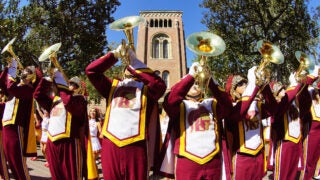
(Photo/Victoria Will)
Two USC Dancers Make their Debut on One of Theater’s Biggest Stages
A pair of USC Kaufman School of Dance graduates follow their dreams to Broadway on a journey they never could have anticipated.
Satori Folkes-Stone ’19 remembers the moment she got the call.
“I was floored. Literally — there was a video of me on the floor,” she says. The graduating senior had just landed a spot in the highly anticipated Broadway revival of West Side Story. After a brutal gauntlet of auditions, the USC Glorya Kaufman School of Dance student would be launching her professional career on one of theater’s biggest stages.
Folkes-Stone had been waiting anxiously for news after finding out that fellow USC Kaufman alum Madison Vomastek ’19 had made the cut earlier that day. The two friends had gone through the tryouts together. After Folkes-Stones got the call later that evening, “the news was such a relief,” she says. “I thought I hadn’t gotten the job.”
For Vomastek, she recalls seeing a caller on her phone with a New York area code. She assumed it was someone else, anyone besides the production company. But on the line was the woman casting the show. “She’s like, ‘Madison, we’d like to offer you the role of a Jet girl in West Side Story,’” Vomastek remembers. She was overjoyed.
After years of training, the soon-to-be USC graduates had earned a ticket to dance on Broadway. Their big break had arrived. Now they wanted to see how far they could go.
A Strong Start for USC Kaufman Alumni
Landing a part in any Broadway show is a hard-won bragging right. But West Side Story remains more than just any show. It was a hit from the moment the curtains lifted in 1957, and a film version from composer Leonard Bernstein and choreographer Jerome Robbins captivated audiences worldwide when it premiered in 1961. Viewers fell hard for the retelling of Romeo and Juliet set in the tenements of Manhattan. Here, the Sharks and the Jets battle in gang warfare for turf and glory; young lovers dream of a future together; and Puerto Rican immigrants tunefully debate the American dream. The show became a pop culture touchstone.
The West Side Story that Folkes-Stone and Vomastek would help recreate was not the beloved original, however. This version ditched Robbins’ finger-snapping choreography for an edgier style from avant-garde choreographer Anne Teresa De Keersmaeker. The complex stage design featured digital video projections and wind and rain machines that soaked the set every night. Gone were the greasers and bobby soxers; the Jets and Sharks now teemed with a young, diverse cast well-versed in hip-hop and street dance.
And in a nod to today’s headlines, the musical’s formerly light-hearted “Gee, Officer Krupke” number became a blistering indictment of police brutality, proudly asserting that Black Lives Matter.
Folkes-Stone and Vomastek were stepping into more than a stage classic. Their cast would remake West Side Story for their generation.
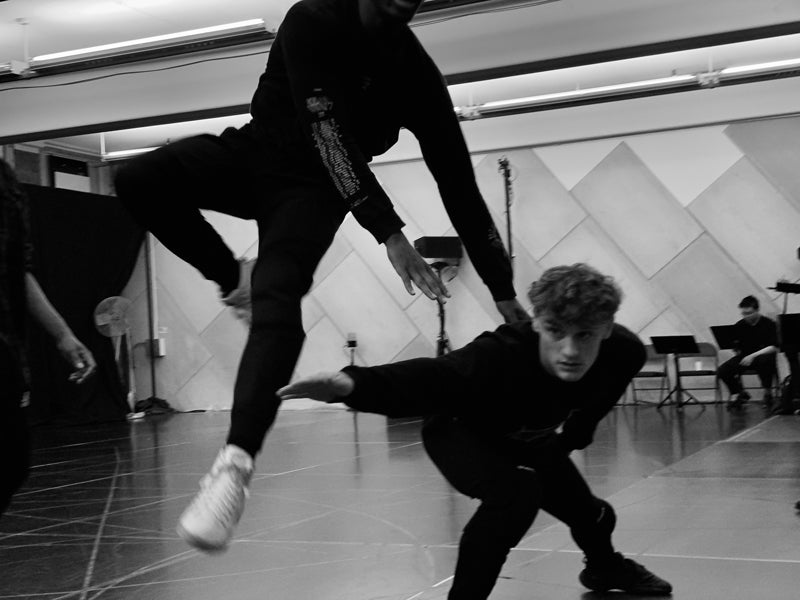
Two Dancers Take Unique Steps to USC
Folkes-Stone grew up in Los Angeles, where her mother, Neisha Folkes, operates a musical theater and hip-hop camp. Neisha performed in the prestigious Alvin Ailey American Dance Theater and had danced in Broadway productions. One of her shows, Guys and Dolls, played in the same theater where her daughter would make her Broadway debut decades later.
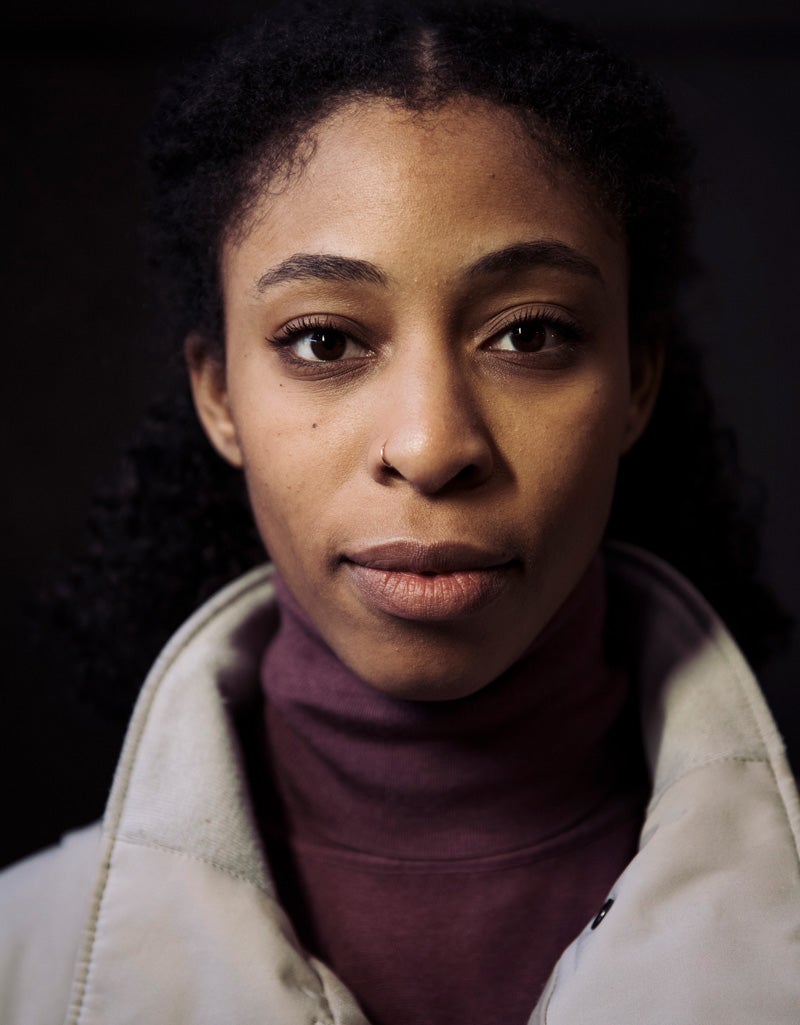
The young Folkes-Stone started dancing at 8 and, in her words, “sorta never looked back.” For college, family friend Desmond Richardson — he performed with her mother in their Ailey days — pointed Folkes-Stone in the direction of USC Kaufman, where he is an artist-in-residence.
Vomastek arrived at USC with a different story. At 4 million people, Los Angeles dwarfs her hometown of Traverse City, Michigan (population: not quite 16,000). But because USC Kaufman’s leaders carefully selected their first class of students, Vomastek quickly felt at home in the school’s community of welcoming faculty and 33 like-minded souls.
“USC Kaufman emphasizes community building and supporting one another — it’s a special place,” says Vomastek, who previously studied dance at Walnut Hill School for the Arts in Massachusetts.
Both women say USC transformed their lives. “USC taught me things I didn’t know I wanted to know but needed to know,” Folkes-Stone says. Her teachers opened her eyes to the size and scope of the dance world and the many possibilities for a career.
Founded in 2012 with a gift from visionary philanthropist Glorya Kaufman, USC Kaufman welcomed Folkes-Stone, Vomastek and the rest of its first class in 2015. At the same time, the school acquired a teacher of world renown when choreographer William Forsythe joined the faculty. He’s known for extending the range of classical ballet in off-kilter choreographic approaches and also for his high-concept experiments in dance theater and improvisation.
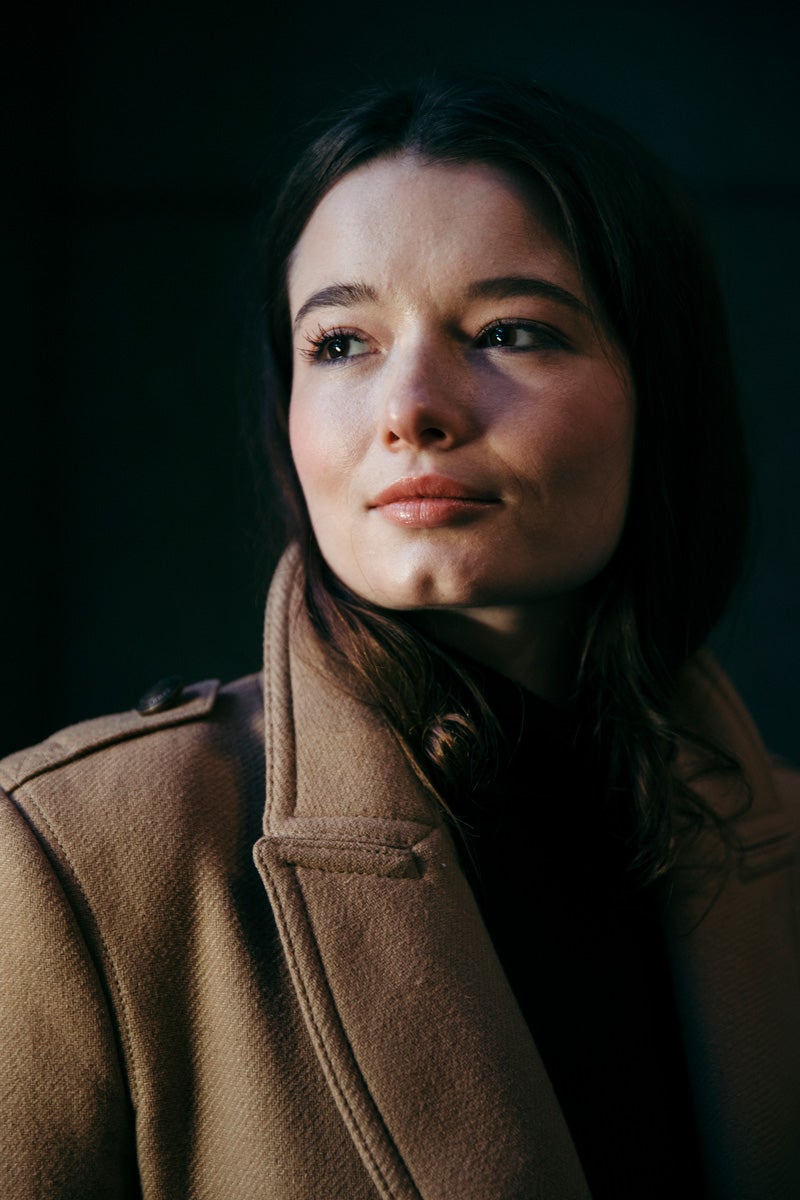
The USC Kaufman curriculum is broad. A distinguished faculty teaches traditional ballet and contemporary dance alongside arts leadership and dance traditions from around the world. Folkes-Stone and Vomastek also studied hip-hop with masters E. Moncell Durden and d. Sabela grimes, who teaches a groundbreaking improvisational technique called Funkamental MetaKinetics.
This diverse training in spontaneity was key to their success and artistic growth, Folkes-Stone and Vomastek say. They also credit their finely honed improv skills for giving them an advantage during the West Side Story auditions in Los Angeles.
Vomastek tells the tale: “The last day we did improvisation, and we did it in a ‘cypher’ setting. A cypher comes from hip-hop. It’s a community-building exercise where everybody is in a circle, and one or two people go in at a time and express their skill sets and their movement. We would cypher all the time in our hip-hop classes with Sabela and Moncell. So, the audition was the best setup for students at Kaufman.”
Adds Folkes-Stone: “Improv is me now. It is the center of my dance love and experience, and it connects to my being in love with street dance. I would not be as close to my soul now if I didn’t go to USC.”
USC Kaufman Alumni Dance into the Bright Lights
Surviving the L.A. auditions was just the first step in a long casting process. Vomastek had to pass another week of auditions in New York. Then, while she was on spring break, the casting directors unexpectedly asked to hear her sing. “I sent them a video after a long day on the beach,” she says. “I was very relaxed, and I think that helped, because I’m more of a dancer than a singer!”
Soon after, Vomastek loaded her parents’ cast-off furniture into a U-Haul truck and headed east. The USC Kaufman alum drove into Manhattan, where a friend had rented an apartment a few blocks west of Times Square. Meanwhile, Folkes-Stone found a home in Brooklyn, grateful for a little more open space.
Neither had time to take a gawking tour of the city, as they almost immediately plunged into rehearsals. “It was a hard process to make a new show,” Folkes-Stone admits. Amid exhaustive training and practice, she surprised herself. “I was learning how much you can take,” she says of her endurance. “I didn’t know I could take as much as I could.”

The show’s casting team intentionally recruited fresh faces, with many of the performers also making their Broadway debuts. At first, the cast worked with members of De Keersmaeker’s company to learn her style and vocabulary. Then the choreographer herself stepped in, helping them place their own creative stamp on the moves.
Vomastek had discovered De Keersmaeker’s videos when she was 13 and soon became obsessed with memorizing the dizzying loops of the choreographer’s Fase duet. Even as an adult dancer, she still had to study intensely to learn De Keersmaeker’s unconventional methods, which continued as she prepared for West Side Story.
I experienced a lot of growth. When we opened on February 20, it was like stepping onto a stage I had felt before, but this time it was a reward worth waiting for.
Madison Vomastek
“I experienced a lot of growth,” she says. “When we opened on February 20, it was like stepping onto a stage I had felt before, but this time it was a reward worth waiting for.”
Folkes-Stone was impressed by De Keersmaeker’s humanity. “She’s very honest. She’s very empathetic, when she can be. She’s very curious, and you could tell she just loves making things.”
By the time West Side Story finally arrived, the recent grads felt like old-timers. Even so, nothing could have prepared them for the task of executing the demanding choreography eight times a week—or navigating the weather on stage. “We have wind and mist, and we get rained on,” Folkes-Stone says. Wet and exhausted after each show, the dancers were still having the time of their lives. Added Vomastek: “It’s a blast. It’s the best job in the world, for sure.”
Folkes-Stones recalls the day of that first show in February as “effervescent and exciting.” But the cast had already run through the show 78 times, she says, “so this hugeness was tamed by an immense sense of familiarity, which is a nice balance. I’ll tell you that as soon as bows ended, we were sprinting back to the dressing rooms to get ready for the opening night party!”
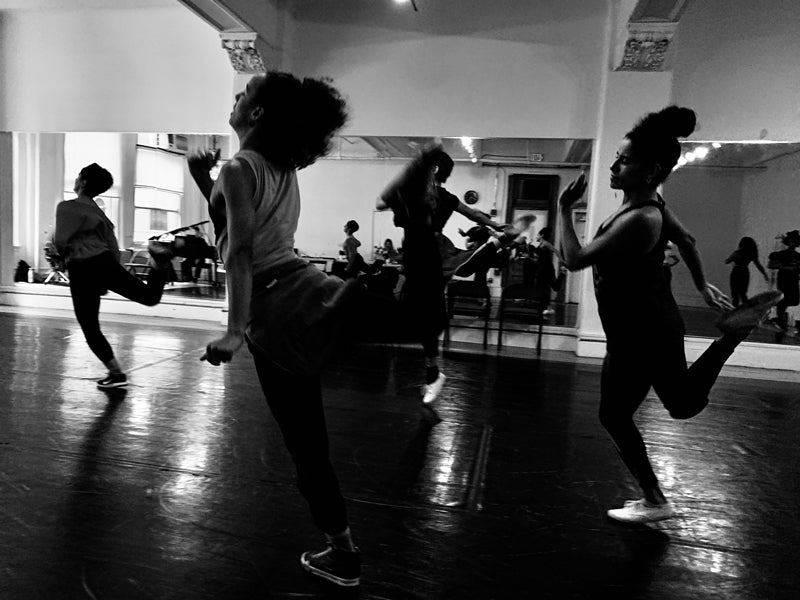
A Sudden Twist Upends their Big Break
In life, sometimes even the most exhaustive preparation can’t prevent the unexpected. In January, as West Side Story geared up for its highly anticipated debut, a deadly virus began spreading across the globe. Rumors of a pandemic began to reach the dancers early in February, just weeks before their first show. Folkes-Stone remembers the first words as subtle, mostly about the number of coronavirus cases in Italy.
Reality hit on March 12, less than a month after opening night. The show had played to a packed house the day before. Under new quarantine orders, though, West Side Story had to close its doors. Broadway productions abruptly halted and the stunned New York theater community went dark, its future uncertain.
Folkes-Stone hunkered down in her Brooklyn apartment to wait out the crisis until the show can return. Vomastek went back to Michigan to farm, teach locally and assist in her family’s business. She plans to return to a previous project in Germany until Broadway opens back up.
The dance community really tries to stick together, and we’ve been supporting each other virtually and it’s definitely felt. But most of us rely on live performance.
Satori Folkes-Stone
The USC Kaufman alums are hanging on to their dreams, but those dreams are delayed. Like many Americans, from small business owners to office workers, they’re trying to use their skills however they can until they go back to doing what they were born to do.
During the pandemic, social media users have drawn inspiration from videos of opera singers belting out arias from balconies and violinists playing the theme from Titanic in grocery store aisles. Though the arts can still unite, Folkes-Stone notes that many artists are struggling and need support. Some 5 million Americans work in the arts and cultural fields, according to the National Endowment for the Arts, and COVID-19 threatens not only their lives but also their livelihoods.
Artists have long been the heartbeat of their communities, she points out, but it often feels like they’re an afterthought. “The dance community really tries to stick together, and we’ve been supporting each other virtually and it’s definitely felt,” Folkes-Stone says. “But most of us rely on live performance.”
Editor’s note: This story aimed to capture the excitement of beginning a career in dance for these USC Kaufman alums, but we didn’t expect the appearance of a table-turning character: the coronavirus. We hope that audiences can soon return to Broadway; the show must go on.



